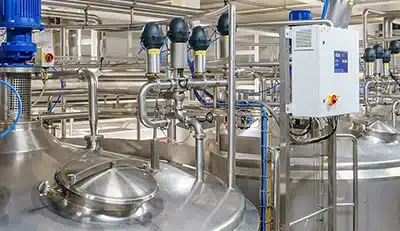Manual Warewashing Best Practices: Ensuring Clean & Safe Dishware
In the Irish foodservice industry, maintaining high hygiene standards is crucial for customer safety and satisfaction. While many establishments use commercial dishwashers, manual warewashing remains an essential method for cleaning and sanitising dishes, utensils, and cookware. To prevent contamination and ensure compliance with health regulations, following proper warewashing procedures is critical.
The Three-Compartment Sink System
The three-compartment sink method is the industry standard for manual warewashing. Each sink has a distinct purpose:
- Washing – Removes food particles and grease using hot water and Greenclean detergent.
- Rinsing – Eliminates detergent residues with clean, warm water.
- Sanitising – Kills bacteria and pathogens using either chemical sanitisers (Quatsan Plus) or hot water.
Step-by-Step Guide to Effective Manual Warewashing
1. Pre-Scraping & Soaking
- Scrape off leftover food and dispose of waste properly.
- For heavily soiled cookware, pre-soak items to loosen grease and dried food.
2. Washing (First Sink)
- Fill the first sink with hot water (at least 43°C/110°F) and Greenclean manual dishwash detergent.
- Use a brush, sponge, or scouring pad to scrub dishes, ensuring all grease and debris are removed.
- Replace soapy water as needed to maintain effectiveness.
3. Rinsing (Second Sink)
- Rinse dishes thoroughly with warm, clean water to remove detergent and residue.
- Avoid dipping items into dirty water—use running water or refill the sink when needed.
4. Sanitising (Third Sink)
Sanitising is a critical step to eliminate bacteria and viruses. There are two main methods:
- Chemical Sanitising: Use an EN1276 and EN14476 approved sanitiser (e.g., Quatsan Plus) in the correct concentration. (Typically, concentration is validated as PPM by quat test strips before use.)
- Hot Water Sanitising: Immerse items in water at 77°C (171°F) for at least 30 seconds. A heat-resistant thermometer should be used to ensure proper temperature.
5. Air Drying
- Place sanitised dishes on a clean, non-absorbent drying rack.
- Never use towels to dry dishes, as they can introduce bacteria.
Common Mistakes to Avoid
- Skipping the Sanitising Step: Without proper sanitisation, harmful bacteria may remain.
- Reusing Dirty Water: Change water regularly to maintain effectiveness.
- Improper Sanitiser Concentration: Too little sanitiser won’t kill bacteria; too much can be unsafe. Usimg a chemical dosing system is industry best practice and always test with sanitiser test strips.
- Stacking Wet Dishes: This can trap moisture and promote bacterial growth.
Best Practices for Maintaining Warewashing Areas
- Train staff regularly on proper warewashing techniques.
- Keep wash sinks, drying racks, and surrounding areas clean and organised.
- Monitor water temperature and sanitiser levels frequently.
- Schedule regular deep cleaning of sinks and equipment.
By following these best practices, Irish foodservice operators can ensure that all dishware, utensils, and cookware remain clean, safe, and compliant with health regulations. Clean dishes not only protect customers from foodborne illnesses but also enhance the reputation of your establishment.
Would you like a downloadable checklist for manual warewashing best practices? Complete the form below to download now;












Leave a Reply